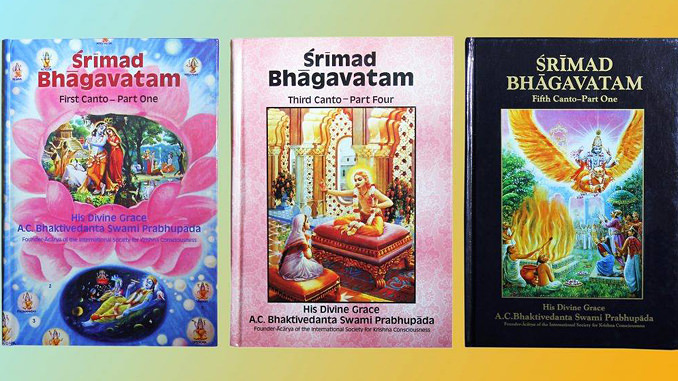
The Sanskrit “kan” is described as “to breathe (an) with an enveloping motion (k)”. Its meaning seems to be to “breathe deeply” allowing one to “sing” to “play music” to “be happy”. The Sanskrit dictionary defines “kan” as “to sound” “to cry” “to sigh”.
“Kan” produces “kantha” meaning “throat” and “kantha mala” meaning “neck beads” and also “kanthya” meaning “glutteral” “pronounced from the throat”.
“Kan” becomes the Indo/European “Kan” meaning “to sing” and from this comes the Latin “Cantare” meaning “to sing” the Latin “Cantus” meaning “song” and the Latin “Canto” meaning “singing” and in Ireland we have “Canim” meaning to “sing”.
Vedantists familiar with the many “Cantos” of the great spiritual classic “Srimad Bhagavatam” may be surprised to learn that “Canto” is not to be found in any Sanskrit dictionary, although its root “Kan” is Sanskrit. The word formation “Canto” is Latin, we see these “Cantos” in Dantes “Divine Comedy” which has 100 “Cantos”.
Other words emerging from this Sanskrit “Kan” meaning “sound” “cry” “sigh” are “Chant” “Cantor” “Chanteuse” “Charm” “Recant” “Accent” “Enchantment” “Incentive” “Chantilly” “Incantation” all of which emerge from this Indo/European root “Kan” meaning “to sing” whose source is this Sanskrit “Kan” meaning “to sound”.
“In the high plateau of eastern Iran, in the oases of Serindia, in the arid wastes of Tibet, Mongolia, and Manchuria, in the ancient civilized lands of China and Japan, in the lands of the primitive Mons and Khmers and other tribes of Indo-China, in the countries of the Malaya-Polynesians, in Indonesia and Malay, India left the indelible impress of her high culture, not only upon religion, but also upon art, and literature, in a word, all the higher things of spirit.” Rene Grousset (1885-1952) French art historian. Author of several books including Civilization of India and The Empire of the Steppes: A History of Central Asia.
